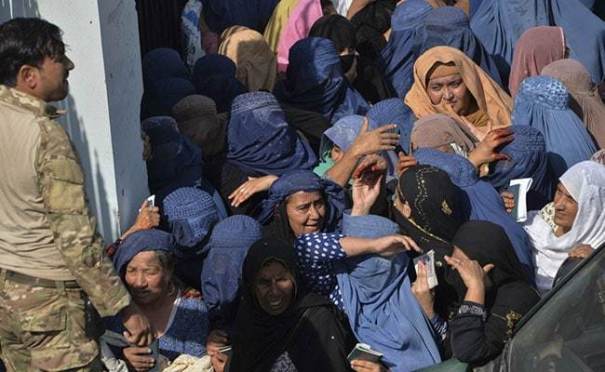Demand for Pakistan visas sets off deadly stampede in Afghanistan
By Zabihullah Ghazi and Fahim Abed
JALALABAD — A stampede in a crowded stadium in eastern Afghanistan on Wednesday (21) left at least 12 women dead, officials said. The women were among thousands of people hoping to get visas to enter Pakistan for medical treatment.
Many people in Afghanistan, a war-ravaged country with minimal health care facilities, cross the border into Pakistan for treatment. But since the spring, Pakistan had drastically reduced the number of visas that it issued to Afghans, hoping to minimize the spread of the coronavirus.
Pakistan recently announced that it would resume issuing visas at a more normal rate. But there was so much pent-up demand that thousands of people gathered before dawn at the soccer stadium, in the city of Jalalabad, waiting for tokens to be given out that would enable them to apply for visas. Just 1,000 visas were to be processed that day.
About 10,000 people were in the stadium when the stampede occurred, said Attaullah Khogyani, a spokesman for the governor of Nangarhar province, which includes Jalalabad. The stampede began as the tokens were being distributed to the crowd, Khogyani said.
“There were several thousand women,” he said. “All of those killed were ill women who were trying to get a visa and go for their treatment to Pakistan.”
Pakistan, despite its tense relations with the Afghan government over its tacit support for the Taliban, is a key destination for Afghans. About 3 million Afghan refugees live there, and until the pandemic struck, there was a constant flow of Afghans across the border, seeking work or medical care.
The Pakistani Consulate in Jalalabad, which distributes visas for residents of seven eastern and southeastern provinces, recently reopened after being closed for nearly eight months because of Pakistan’s coronavirus travel restrictions. Mohammad Sadiq, Pakistan’s special envoy for Afghanistan, had recently announced a new visa regime that would ease the process for issuing long-term, multiple-entry visas for Afghans.
“The charges of corruption and mishandling of applicants in recent years had tarnished the image of Pakistan and caused hardship to visa applicants,” Sadiq said in announcing the new visa policy.
The provincial authorities in Nangarhar announced the new procedure for distributing tokens to visa applicants, which was meant to discourage crowding in light of the heavy demand. Under the rules, the first 1,000 people would get tokens and the rest would have to try their luck the next day, Khogyani said.
“The stampede broke out in the women’s section,” said an eyewitness, Abdullah, who like many Afghans goes by one name. “Then police arrived and the situation got worse. I escaped from the stadium. When I came back, several women were lying on the ground and they were dead.”
In July, clashes along the Afghan-Pakistani border left 15 civilians dead in Kandahar province, as the Pakistani army fired heavy artillery into civilian areas. Protesters on both sides of the border had demanded the reopening of a border crossing that Pakistan had closed because of the pandemic.
The stampede came on another bloody day of violence across Afghanistan, as the Taliban waged attacks despite continuing peace talks in Qatar between the militants and government negotiators.
The bloodiest attack took place in the northern province of Takhar, where a police special forces unit was ambushed by the Taliban, officials said. More than 42 police officers were killed, according to Wafiullah Rahmani, head of the provincial council, who spoke from a hospital where bodies were arriving.
Rahmani said the head of the special forces unit, a provincial deputy police chief, was among the dead. “The hospital is so busy, and many people are looking for their loved ones,” he said. “The casualties may increase, as many police officers are still missing.”
Other security officials put the toll even higher. “I have counted 50 dead bodies and I have got tired of counting,” said Karimullah Bek, a pro-government militia commander in the area.
-New York Times


